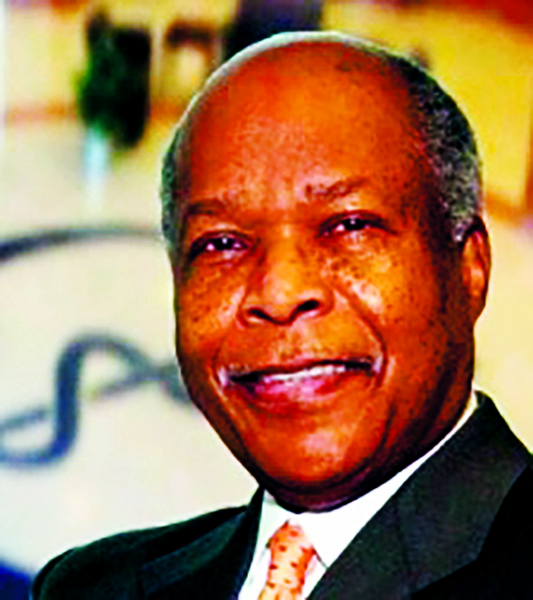HBCU
COVID’s Devastation Leads Black MDs To Align HBCU & Community Health Resources On Racial Health Disparities
“COVID-19 exposes deep-seated health disparities.”
#HealthDisparities #RacialHealthDisparities #COVID19 #BlackDoctors #HBCU #PublicPolicies

By Hazel Trice Edney
(TriceEdneyWire.com)
Thousands of Black people had protested and many had died at the hands of police, White supremacists and racists as they engaged in non-violent campaigns to win the right to vote.
Still, America did not fully sit up and hear their cries until “Bloody Sunday,” March 7, 1965. On that day TV cameras showed protestors being brutally attacked and beaten by the Alabama State Police as they marched peacefully from Selma to Montgomery across the Edmund Pettus Bridge.
It was only then that the United States government took decisive action. President Lyndon B. Johnson, a week after “Bloody Sunday,” adopted the words of the civil rights leaders and declared before the nation in a televised speech to Congress, “We shall overcome.”
Within a few months, the United States Congress adopted the Voting Rights Act (VRA) of 1965 and it was signed into law by President Johnson on August 6 that year. In a nutshell, the VRA prohibited any activities by anyone to abridge the right to vote.
More than 58 years later, Black doctors on the front lines against racism in medicine across the U. S. had hoped that the revelation of racially disparate suffering and death amidst the Coronavirus pandemic (COVID-19) would become the “Bloody Sunday” for revealing the truth about health disparities in America and escalate the long struggle to end them. But that has apparently not happened.
 “I compare this now to the civil rights movement. We were really burdened with discrimination and brutality etcetera for many years,” says Dr. Louis Sullivan, founder of the Morehouse School of Medicine, and pioneer of the 15-year-old government agency now known as the National Institute of Minority Health and Health Disparities.
“I compare this now to the civil rights movement. We were really burdened with discrimination and brutality etcetera for many years,” says Dr. Louis Sullivan, founder of the Morehouse School of Medicine, and pioneer of the 15-year-old government agency now known as the National Institute of Minority Health and Health Disparities.
“But, the incidents such as the Birmingham police treatment of Blacks on the Edmund Pettus Bridge revealed to the nation those things that had existed for a long time. So, in a way, I see that the Coronavirus has had the same impact. Health disparities has been an issue for years. But people have not been aware or haven’t really understood or taken it as seriously as many of us who were working with disparities have taken it.
“But now we are confronting this. And I am hoping that this really results much more in resources and attention and research and care to be devoted to the elimination of these disparities.”
◆◆◆
Dr. Sullivan is among leading Black physicians and HBCU administrators who agree that health disparities in the Black community – and the racism at the root of it – has been revealed to be far worse than anyone thinks. They say the disparities still must be dealt with through racial and cultural coalitions, increase in Black medical professionals and strengthening of public policies.
“COVID-19 has really pulled the scab off the sore of the underbelly of our mistreatment as Black Americans,” says Dr. Rahn Bailey, chief of the Psychiatry Department at Louisiana State University. “It’s a long story, but a pertinent and a salient one. So when an additional stresser like the COVID-19 or the Coronavirus presents itself, we already have a subscript in American life where whatever is bad happens worse to African-Americans. We have less health care access; we have fewer hospitals in our communities; we have less access to providers or specialists; very often we get less optimal medication or management. We have data to support that.”
The data indicates racial disparities across the board:
• Exact numbers on COVID-19 infections, hospitalizations and deaths are fuzzy, largely because states initially did not track the pandemic by race. But, the Kaiser Family Foundation reported last year that though racial disparities narrowed as the pandemic subsided, during the surge associated with the Omicron variant in winter last year, disparities in cases once again widened with people of color, including African-Americans at 2,937 per 100,000 people, compared to cases among White people at 2,693 per 100,000. This number is astronomical given that America is approximately 12 percent African-American and 59 percent White. The New York Times reported that “during the height of the Omicron variant, Covid killed Black people in rural areas at a rate roughly 34 percent higher than it did white people.”
The broad disparities continue among other diseases:
• According to the National Cancer Institute, Black men die of prostate cancer at twice the rate of White men.
• Although Black women have a 4 percent lower rate of breast cancer diagnosis, the death rate for Black women is 40 percent higher than White women, according to the American Cancer Association.
• America’s leading cause of death, heart disease, causes one of every three deaths in the U. S. But African-Americans and Latinos experience “double the rate of premature deaths” from heart disease compared to their White counterparts, according to the National Institute of Health.
• According to the CDC, “Black women are three times more likely to die from a pregnancy-related cause than White women. Multiple factors contribute to these disparities, such as variation in quality healthcare, underlying chronic conditions, structural racism, and implicit bias.”
• Black children have a “500 percent higher death rate from asthma compared with White children,” according to the Harvard School of Public Health.
• The disparities even persist in treatments and care. For example, of amputations, Black patients lose limbs at three times the rate of White patients, despite progress in diabetic research, according to the NIH.
To read the full article, subscribe to the New Journal and Guide.














